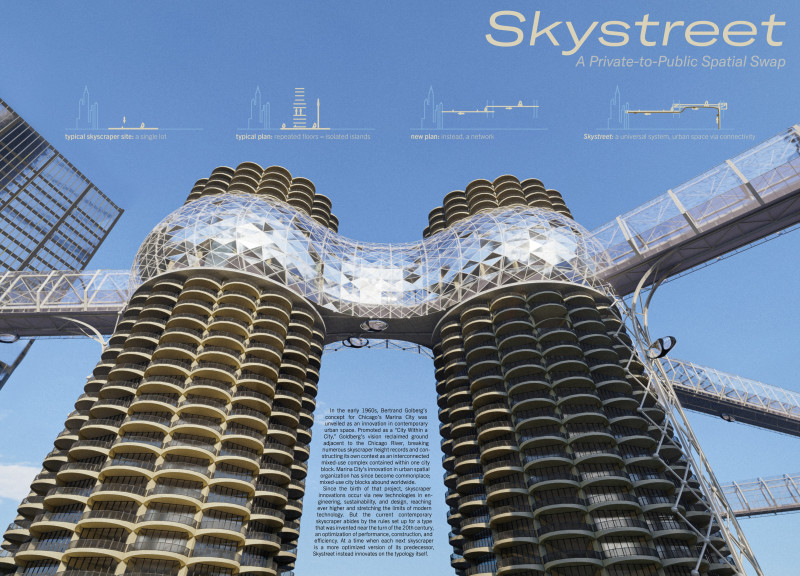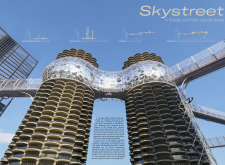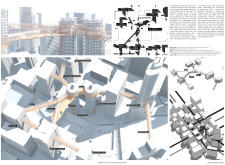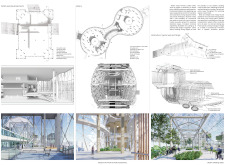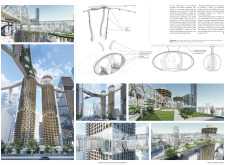5 key facts about this project
The Skystreet project reshapes high-rise living by creating an interconnected urban network in Chicago. The aim is to change how skyscrapers have traditionally worked as isolated structures. Instead of existing on their own, these buildings are designed to be part of a cohesive system that promotes connectivity and public access. Drawing inspiration from Bertrand Goldberg’s Marina City, Skystreet merges mixed-use spaces with a modern understanding of urban life, encouraging community interaction and ease of movement.
Conceptual Framework
The design reimagines skyscrapers as essential parts of a larger urban landscape. This project moves away from the single-lot model typically seen in high-rise development, which often relies on repeated floor plans. Instead, it envisions a network where skyscrapers connect and provide benefits to one another, making urban spaces more accessible. It also challenges the traditional ideas of ownership while fostering a sense of community.
Spatial Organization
Key to the design are the nodes, webs, and flanges that organize the space. Nodes act as central hubs that link the various elements within the network, making it easier for people to navigate between different buildings. These nodes facilitate movement in a way that supports both residents and visitors, allowing for simple, direct access to public areas.
Environmental Integration
Webs link these nodes, creating elevated pathways that enhance movement throughout the urban environment. Flanges, designed as outdoor skyparks, add green spaces to the high-density setting. These areas provide important places for leisure and social interaction. Integrating these green spaces into the design shows a commitment to balancing urban living with natural elements.
Structural Considerations
Supporting the Skystreet design is advanced structural engineering, essential for the interconnected framework. While specific materials are not detailed, the approach taken emphasizes flexibility and stability. This attention to engineering addresses modern needs in urban environments, particularly as working habits evolve and spaces need to adapt for varied uses.
In the context of Chicago’s urban landscape, Skystreet aims to redefine high-rise development. The combination of elevated connections and public spaces marks a new approach to city living. By encouraging community involvement and integrating green areas, the project offers a perspective on how tall buildings can coexist in harmony with their surroundings.


